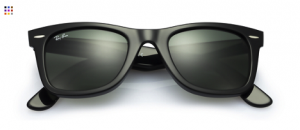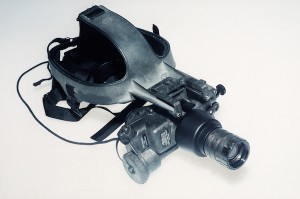A new consumer version of ODG (Osterhout Design Group) augmented reality technology was revealed at last week’s CES show in Las Vegas with the promise of a landmark styling in the what’s-old-is-new-again approach to its latest technology.
The company said it turned to perhaps the most popular sunglass design in history, the RayBan Wayfarer for design inspiration. ODG promises these new augmented reality smartglasses will weigh in at no more than 125 grams, with functionality that matches the company’s existing R-6 family of commercial smartglasses made for government and enterprise customers.

Classic Wayfarer RayBans are the ODG design inspiration for new augmented reality smartglasses to be shown at CES, Image source: Ray-Ban.com
With tablet like functionality one can wear, the ODG smartglasses offer a new level in virtual reality headgear, according to company COO Pete Jameson, who said in the recent pre-show announcement: “Our intention is to deliver a state-of-the-art system in a consumer-friendly form that you can wear to do specific things (which) your laptop, phone or tablet can’t”. This includes the privacy of a head worn display for use in travel, and the ability to view images “…in bright sunlight, play interactive 3D games, or obtain heads-up line-of-sight directions or instructions while keeping your hands free and your eyes engaged in your environment”, according to Jameson.
Osterhout’s experience in virtual reality goes back to the mid 1980’s in both night vision goggles and even SCUBA mask gear. It’s ground breaking PVS7 used by the US military in the Gulf war, was first developed by ODG namesake and founder Ralph Osterhout, who emphasized that the existing line of B to B products are already “…proving their worth in some of the world’s toughest environments”, he said with the intent of now migrating the technology to consumer class devices.

Ground breaking PVS-7 Night vision goggles developed by ODG for military use
To help ODG smartglasses get there, the company turned to Qualcomm’s Vuforia software platform that includes object recognition, images, user defined images, shapes, text, 3D objects and QR code-like Frame Markers created by developers. The software is cutting edge in the VR realm with support for background effects, video playback, virtual buttons and even occlusion management (partially hidden objects can still be recognized, rendered and tracked).
There is a Smart Terrain capability that reconstructs a terrain in real-time, with a 3D map of the environment, and Extended Tracking to deliver a continuous visual experience with or without a sighted target. Qualcomm said its VR software supports most mobile OS platforms (iOS, Android plus Unity 3D) and allows a single native app to cross platforms using the software developers kit (SDK) plus other resources, API’s (C++, Java, and Unity) and a Target manager.
Vuforia is currently in v.3.0 with a beta version 4.0 also available from Qualcomm.
Steve Sechrist

